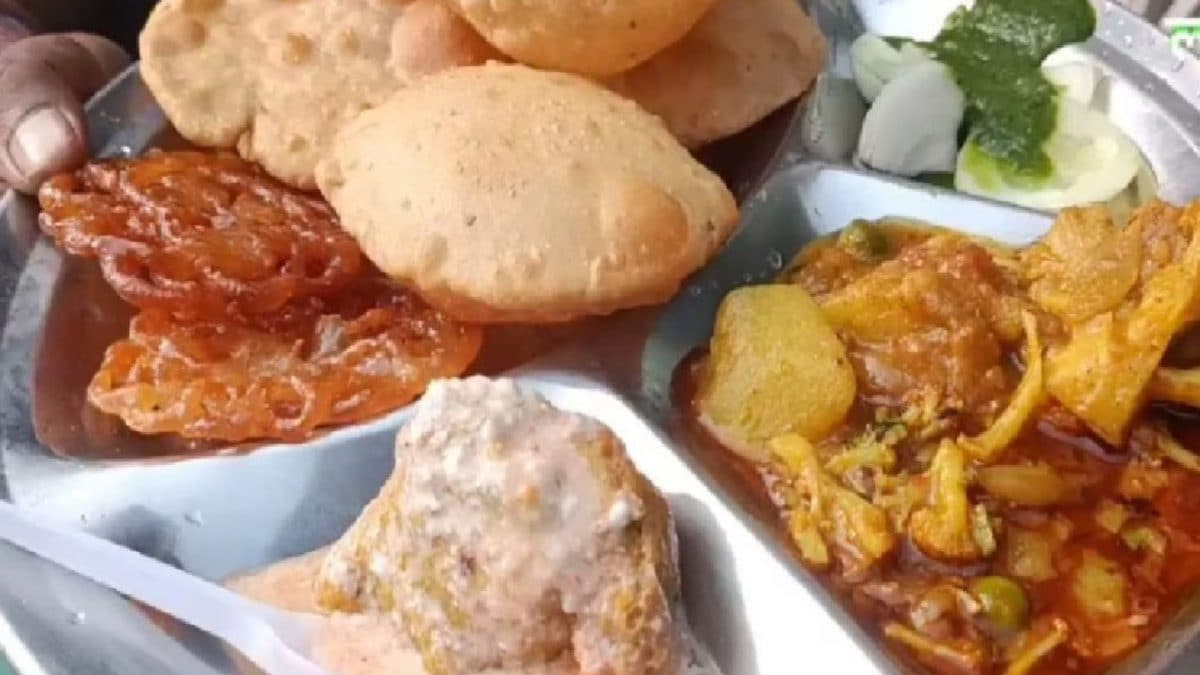Two features mark the geography of Bundelkhand, the region in Central India spread over 13 districts of Uttar Pradesh and Madhya Pradesh: the steep hills of the Vindhyas and progressively scanty rainfall and increasingly frequent droughts.
Consider Panna district in Madhya Pradesh. According to data from the India Meteorological Department, Panna has been receiving progressively less rainfall even as temperatures have been rising. According to one estimate, the average temperature in Bundelkhand is expected to rise by 2-3.5º C by 2100.
The region has thus become a hotbed of droughts. Datia in Madhya Pradesh, for instance, faced nine droughts between 1998 to 2009. In the same period, Lalitpur and Mahoba districts in Uttar Pradesh suffered eight.
The region’s farmers have been the worst affected. As their crops have failed more often, they have struggled to make ends meet and slipped deeper into debt. Agricultural workers have taken up other jobs, such as working in the region’s diamond mines. When that too hasn’t sufficed, the men have left their families behind and migrated, Surendra Singh Jatav, assistant professor of economics at the Babasaheb Bhimrao Ambedkar University (BBAU), Lucknow, said. Their destinations are “Surat, Ahmedabad, Delhi, Bangalore, and Chennai”.
Jatav has studied the impact of climate change on farmers’ lives in Bundelkhand since 2012. The most significant change, he said, is in the social fabric of Bundelkhand’s villages.
Climate migration
A little more than 1,500 km away from Bundelkhand is Charpauli village in Bangladesh. Located along the banks of the Jamuna river, Charpauli has a starkly different problem. Every year during the monsoons, the Jamuna swells and devours the land on its banks. Large chunks of the land break off and are washed away, taking the homes of people with them.
According to some media reports in Bangladesh, in one week in May 2022, riverbank erosion in Jamuna destroyed around 500 houses in Charpauli, leaving thousands homeless. In a 2023 study, researchers at the Dhaka University of Engineering and Technology used satellite images to find that between 1990 and 2020, the river’s left bank had dwindled by roughly 12 m every year and the right bank by about 52 m every year.
Scientists have suggested that climate change leads to a greater volume of water flowing through a particular river channel at a particular time, in turn increasing the risk of flooding and erosion.
The parched lands of Bundelkhand and the flooded banks of the Jamuna share one similarity. As their houses are consumed by the ever-swelling river, people first try to move away from the bank, at times building fresh houses on arable land. Then, when it is no longer possible to survive in the village, according to ETH Zürich researcher Jan Freihardt, entire households migrate to nearby cities like Dhaka as a last resort.
Freihardt, a postdoctoral researcher, has studied climate migration in Charpauli and other villages.
Climate migration refers to the movement of people resulting from climate change-related disasters, which may be sudden (floods, cyclones, etc.) or gradual (increasing temperature, sea-level rise, etc.). According to a 2022 report by the International Refugee Assistance Project, climate and weather-related incidents force about 20 million people to migrate every year to other areas in their own countries. This is called internal migration.
While migration away from the Jamuna’s banks is permanent, climate change can also exacerbate seasonal migration in many areas. One such case is that of migration from Vidarbha and Marathwada, two infamously drought-prone regions of Maharashtra.
Sugarcane and bitter endings

Farmers load harvested sugarcane crop on a tractor to be transported to a sugar mill, at a village in Karad, October 2022. | Photo Credit: PTI
The Vidarbha and Marathwada regions lie in the rain shadow of the Western Ghats.
A rain shadow forms when a region is located on the side of mountains facing away from the sea. As water evaporates from the sea, the warm, moist air rises up. When it reaches the top of the mountains, it condenses to form clouds, which eventually rain down on the side facing the sea. By the time the air crosses over the mountains to the other side, almost all the moisture has been exhausted, thus the side facing away from the sea receives little to no rainfall, aridifying over time. This has happened with Vidarbha and Marathwada.
Climate change is worsening this situation. Both regions have been recording erratic rainfall of late.
“The number of rainy days are coming down and rain on a particular day is increasing. But the gap between two rainy days is long,” Ramanjaneyulu G.V., executive director of the Centre for Sustainable Agriculture, said in September 2024. Satellite data has also revealed that temperatures in the two regions already surpass the 50º C mark in May.
Those who live here pack their belongings on bullock carts and travel for hundreds of kilometres to sugarcane plantations in Western Maharashtra and Karnataka. There, they stay for four to six months, working as “cane cutters” in these fields, Ankita Bhatkhande, head of communications at a social-impact consultancy named Asar, said.
Bhatkhande has been involved in research projects that study the extent and impact of droughts in Maharashtra.
India is the world’s largest producer and consumer of sugarcane. The Ministry of Consumer Affairs, Food and Public Distribution reported that in 2021, the country produced 50 crore tonnes of sugarcane, generating a revenue of more than Rs 20,000 crore.
This flattering number doesn’t reflect the reality of the migrant labourers who harvest the country’s sugarcane fields.
According to Bhatkhande, cane cutters are hired typically as a couple: the husband cuts the sugarcane and the wife stacks them. Together, the couple is called a koita — a Marathi word for the sickle used to cut the sugarcane. These labourers are hired by a contractor known as the mukaddam, who pays the couple an advance: a sum that can range anywhere between Rs 50,000 to Rs 5 lakh depending on the couple’s financial requirements, the size of the sugarcane plantations, and the quantity of sugarcane expected to be harvested that year.
“The precarity and conditions of this migration and the wages that they get have worsened year on year,” Bhatkhande added.
Because they are paid an advance, the labourers are required to work until they have cut enough sugarcane to match the payment. For example, if a couple has been paid Rs 50,000 at the rate of Rs 367 per tonne of sugarcane harvested, they must cut 136 tonnes of sugarcane in the harvesting season. However, erratic rainfall and dry spells have brought down the production of sugarcane, which is a water-intensive crop. This means the labourers have to return the next season with no extra payment to make up for the deficit, creating a cycle of debt bondage.
The worsening precarity also reflects on who is migrating: “Earlier, people in their 30s and 20s were the ones who were migrating. Now, people who are nearing their 70s and 80s are also migrating for work,” Bhatkhande said. The younger people cut the sugarcane and load stacks of it onto tractors while the elders are hired to remove weeds from the farm and sort and stack the cane before it is loaded.
When the migrants reach the sugarcane fields, they are given “an extremely dirty and shabby patch of land where they can set up their homes,” she added. These, according to her, typically take the shape of plastic sheet tents with no electricity, toilets, or water.
Adaptation v. displacement
The conditions are no better for migrants from Bundelkhand. Jatav, the BBAU economist, said that in the metropolitan cities to which they migrate, they work as daily-wage construction workers, security guards, and at dhabas (roadside restaurants). Only those who are highly skilled get jobs that pay them enough money to rent a room. Others accommodate themselves in slums, where poor sanitation leads to a deterioration of their health, Jatav added.
Back home, the struggle is different. As the migrant’s family waits for its remittances to arrive — which can take around six months after a person has migrated and set up shop in the city, per Jatav’s estimate — they struggle to make ends meet. The worst hit are the women and the children. With the women left to manage “everything on their own,” they are unable to effectively monitor even whether their children are going to school, according to Jatav. He added that women also become increasingly vulnerable to sexual assault.
For the migrants from Charpauli and other villages on the banks of Jamuna, what they do after migration depends on where they migrate to. Some villagers migrate to other villages, Freihardt said. There, they insert themselves into jobs that are reminiscent of their life in their previous homes, which now lie underwater: “agricultural work for other people’s lands”. Those who migrate to cities take up more informal jobs, such as rickshaw pulling, construction work, and daily-wage work in brick kilns.
In a 2011 commentary in Nature, researchers from the University of Sussex and the UK government, argued that migration “may be the most effective way to allow people to diversify income and build resilience where environmental change threatens livelihoods.” That is, they suggested, migration could be a form of adaptation against climate change-induced loss of livelihoods.
Jatav disagreed, however: at least in the context of Bundelkhand, he explained, migration is a form of “forced displacement” that lowers the “social security of the migrants and their family.”
“Migration is not an adaptation. It is a crisis.”
Sayantan Datta is an independent journalist and a faculty member at Krea University. They tweet @queersprings. The author thanks Annu Jalais, Chirag Dhara, and Jaideep Hardikar for their inputs.



.png)
.png)
.png)
















 6 hours ago
5
6 hours ago
5








 English (US) ·
English (US) ·